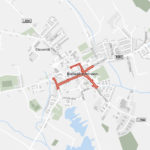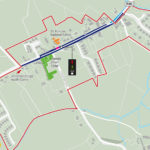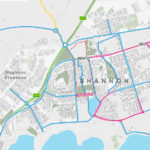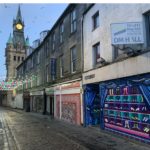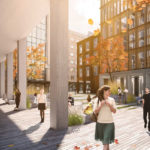...what role for transport?
Following the 2021 independent report ‘A New Future for Scotland’s Town Centres’, the Scottish government, in partnership with COSLA, published new measures in April 2022 to support the regeneration of town centres in Scotland.
Transport is being recognised as having a crucial role to play in revitalising town centres. In particular, it’s welcome that the government response seeks to align funding for town centres with the National Transport Strategy (II) outcomes, such as 10% of the total transport budget going on active travel by 2024-25 and that the response is further aligned with some of the recommendations from the Strategic Transport Projects Review (II) currently under consultation.
As transport consultants, we often get asked what can be done to support town centre regeneration, in particular, how to ‘regain space’ from motorised traffic. Here we’ll take a look at two key elements: gaining a holistic understanding of transport conditions to set a clear direction, and creating engaging discussions on options that rely on both the design and management of urban space.
A holistic view of transport
As multifunctional areas, emotionally and historically significant, our town centres are complex and many stakeholders have a voice. Competing demand for space is often a challenge when it comes to transport in regeneration projects, and even more so in heritage protected areas as often happens in town centres. A variety of needs must be met, from national policy compliance through to the design of a particular bus stop or the location of a bench within a landscaped public space.
Understanding movement within town centres is key to reducing carbon emissions, increasing accessibility, improving attractiveness and ensuring the long-term success, and resilience, of each project. To do so, all movement patterns need to be considered together, not just parking availability, or retail footfall, or traffic signals.
Figure 1: Pedestrian assessment of a town centre in Ennis, Republic of Ireland
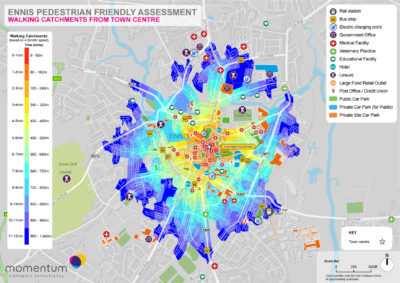
Quantitative data on urban freight and journey typologies for instance can support and complement qualitative data on land uses, desire lines, active frontages, street clutter and many others. Only side by side do they provide an opportunity to understand the unique characteristics of each town centre, and give a comprehensive understanding of the constraints and opportunities of a place; so as to promote an inclusive vision, and direction forward, for all users of town centres.
Creating spaces for people
Once data has been gathered a number of solutions can be brought forward for discussion. Creating spaces for people is often done by suggesting the re-allocation of road space to active travel such as walking, wheeling or cycling. One common worry is that this is done at the expense of the local economy, convenient access and servicing for businesses retailers and employees. However, this doesn’t necessarily have to be the case: where space is being re-distributed, alternative ‘transport demand management’ solutions can be brought forward.
For instance, when it comes to deliveries to shops, a wide range of solutions such as re-timing, consolidation, common procurement, batch ordering and many others can be used to re-shape loading areas into attractive public realm.
Figure 2: West Ealing Freight and Servicing Strategy
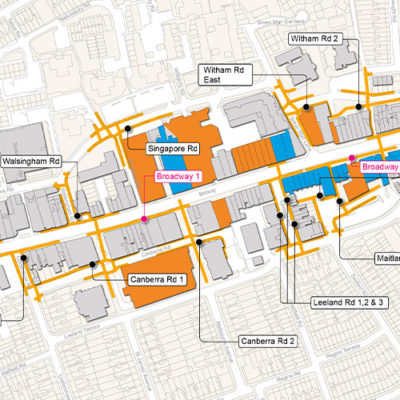
Another example, when transport capacity runs short at peak times, is to look at staggering office start and finish hours to avoid having to provide additional and expensive transport infrastructure. This simple concept has been widely applied during the pandemic, and there are cases where it can benefit town centres in the long term, for instance with schools in dense urban centres.
Finally, micro-mobility solutions can support both the movement of goods and people in the ‘final mile’ of their journeys. Shared, non-motorised devices and vehicles including cargo-bikes, e-bikes or even e-scooters in some parts of the UK can support decongesting town centres and increasing connectivity in a space-efficient way. Strategically-located micro-mobility hubs can host a range of travel options dedicated to the specific profile of a town, for instance having an emphasis on electric transport modes or delivery lockers.
Figure 3: Analysis of optimal locations for e-scooter provision in Dublin
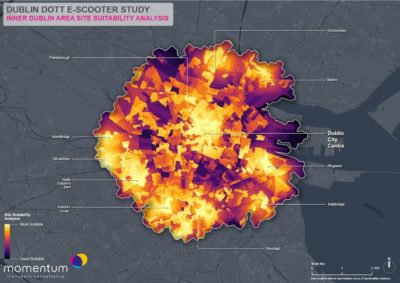
In conclusion, none of these solutions need to be particularly ground-breaking in terms of innovative transport in order to be effective. On the contrary, transport solutions for town centres can align with what town centres are best at doing: bringing people together to collectively come up with unique solutions that work for them.
